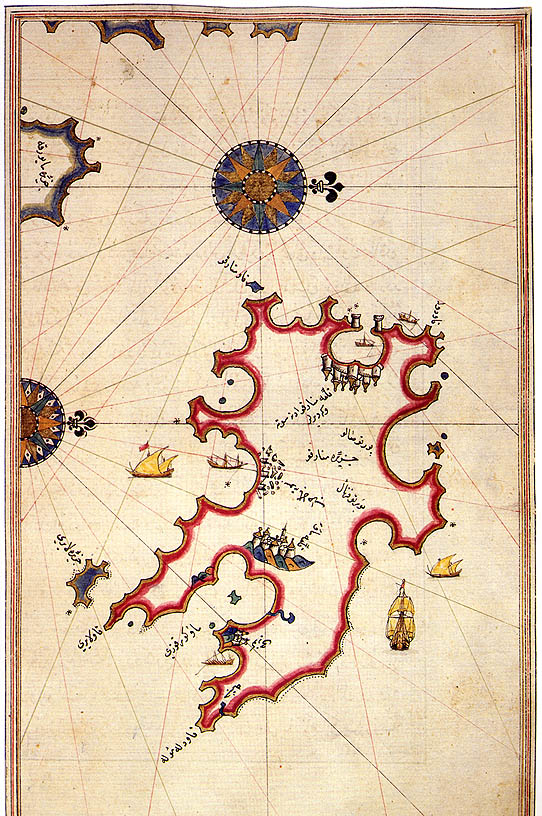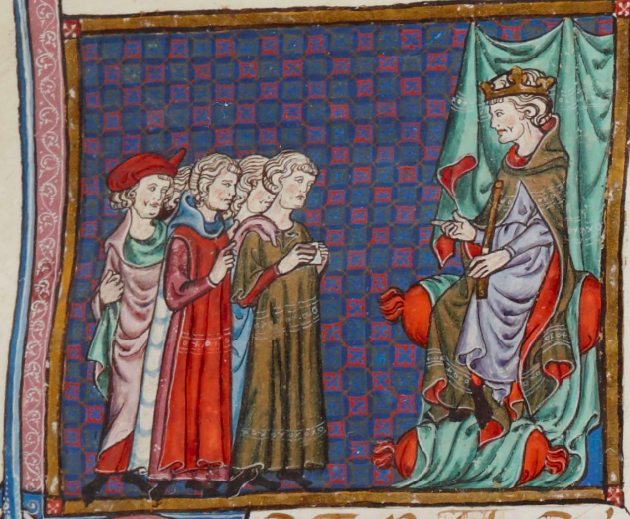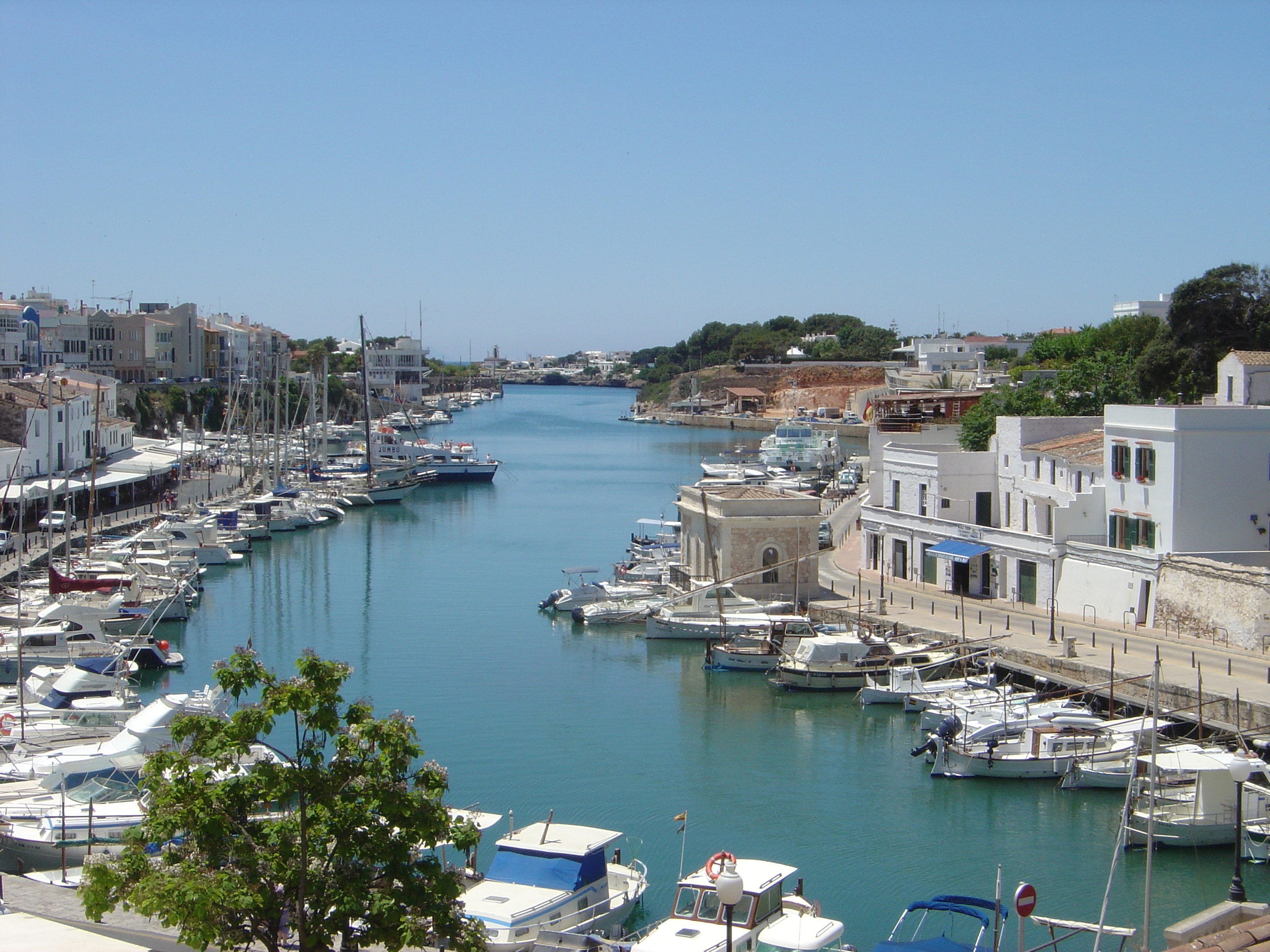|
Abû 'Uthmân Sa'îd Ibn Hakam Al Qurashi
Abû ‘Uthman Sa’îd ibn Hakam al Qurashi (30 December 1204 – 9 January 1282) ( ar, أبو عثمان سعيد بن الحكم القرشي) was the first Ra’îs of Manûrqa (modern Menorca) from 1234 to 1282. Early life Sa’îd ibn Hakam was born in the city of Tavira in the Algarve (modern Portugal). He studied philology at Seville, the capital of the Almohad Caliph of Al Andalus, and took part in literary reunions of famous poets. Al Andalus had been in a process of decadence primarily due to the downfall of the Abbasid Caliph which meant the closing of a vital commercial relationship. This situation brought a critical spiral of internal conflicts and external invasions. Because of the political instability in Al Andalus, Sa’îd ibn Hakam moved to North Africa, to the cities of Bejaïa and Tunis, where he served as secretary to the Almohad governors. Al-Motaserrif of Manûrqa Two years later, he planned to return to Al Andalus, but the situation had worsened ... [...More Info...] [...Related Items...] OR: [Wikipedia] [Google] [Baidu] |
Menorca
Menorca or Minorca (from la, Insula Minor, , smaller island, later ''Minorica'') is one of the Balearic Islands located in the Mediterranean Sea belonging to Spain. Its name derives from its size, contrasting it with nearby Majorca. Its capital is Mahón ( ca, Maó), situated on the island's eastern end, although Menorca is not a province and forms a political union with the other islands in the archipelago. Ciutadella and Mahon are the main ports and largest towns. The port of Mahon is the second biggest natural port in the world. Menorca has a population of approximately 93,397 (at 1 January 2019). It is located 39°47' to 40°00'N, 3°52' to 4°24'E. Its highest point, called El Toro (from Catalan "''turó''" meaning ''hill''), is above sea level. History The island is known for its collection of megalithic stone monuments: ''navetes'', ''taules'' and ''talaiots'', which indicate very early prehistoric human activity. Some of the earliest culture on Menorca was ... [...More Info...] [...Related Items...] OR: [Wikipedia] [Google] [Baidu] |
King Of Majorca
The Kingdom of Majorca (1231–1715) was created by James I of Aragon following his conquest in 1229 and the subsequent surrender of sovereignty by the Muslim rulers of the Balearic Islands in 1231. It was ruled in conjunction with the Crown of Aragon until his death when by will it passed to a younger son, James (II), who ruled the kingdom as nominal vassal of the Aragonese Crown. He was removed by his nephew Alfonso III of Aragon, who conquered the island of Menorca in 1287, effectively recovered Menorca from Moorish rule. By the Treaty of Anagni of 1295, however, these island territories were yielded back to James. In 1344, the kingdom was again united with the Crown of Aragon but still disputed by pretenders until 1403. It subsequently formed an administrative kingdom within the Crown of Spain periodically included in the royal style as in Philip II's in the 1584 Treaty of Joinville until the Nueva Planta Decrees abolished these divisions in 1715. Monarchs of Majorca ... [...More Info...] [...Related Items...] OR: [Wikipedia] [Google] [Baidu] |
List Of Ra'îs Of Manûrqa
A ''list'' is any set of items in a row. List or lists may also refer to: People * List (surname) Organizations * List College, an undergraduate division of the Jewish Theological Seminary of America * SC Germania List, German rugby union club Other uses * Angle of list, the leaning to either port or starboard of a ship * List (information), an ordered collection of pieces of information ** List (abstract data type), a method to organize data in computer science * List on Sylt, previously called List, the northernmost village in Germany, on the island of Sylt * ''List'', an alternative term for ''roll'' in flight dynamics * To ''list'' a building, etc., in the UK it means to designate it a listed building that may not be altered without permission * Lists (jousting), the barriers used to designate the tournament area where medieval knights jousted * ''The Book of Lists'', an American series of books with unusual lists See also * The List (other) * Listing (di ... [...More Info...] [...Related Items...] OR: [Wikipedia] [Google] [Baidu] |
Arabic Language
Arabic (, ' ; , ' or ) is a Semitic language spoken primarily across the Arab world.Semitic languages: an international handbook / edited by Stefan Weninger; in collaboration with Geoffrey Khan, Michael P. Streck, Janet C. E.Watson; Walter de Gruyter GmbH & Co. KG, Berlin/Boston, 2011. Having emerged in the 1st century, it is named after the Arab people; the term "Arab" was initially used to describe those living in the Arabian Peninsula, as perceived by geographers from ancient Greece. Since the 7th century, Arabic has been characterized by diglossia, with an opposition between a standard prestige language—i.e., Literary Arabic: Modern Standard Arabic (MSA) or Classical Arabic—and diverse vernacular varieties, which serve as mother tongues. Colloquial dialects vary significantly from MSA, impeding mutual intelligibility. MSA is only acquired through formal education and is not spoken natively. It is the language of literature, official documents, and formal written m ... [...More Info...] [...Related Items...] OR: [Wikipedia] [Google] [Baidu] |
El Escorial
El Escorial, or the Royal Site of San Lorenzo de El Escorial ( es, Monasterio y Sitio de El Escorial en Madrid), or Monasterio del Escorial (), is a historical residence of the King of Spain located in the town of San Lorenzo de El Escorial, up the valley ( road distance) from the town of El Escorial and about northwest of the Spanish capital Madrid. Built between 1563 and 1584 by order of King Philip II (who reigned 1556–1598), El Escorial is the largest Renaissance building in the world. It is one of the Spanish royal sites and functions as a monastery, basilica, royal palace, pantheon, library, museum, university, school, and hospital. El Escorial consists of two architectural complexes of great historical and cultural significance: the royal monastery itself and '' La Granjilla de La Fresneda'', a royal hunting lodge and monastic retreat about 5 kilometres away. These sites have a dual nature: during the 16th and 17th centuries, they were places in which the power of th ... [...More Info...] [...Related Items...] OR: [Wikipedia] [Google] [Baidu] |
Peter III Of Aragon
Peter III of Aragon ( November 1285) was King of Aragon, King of Valencia (as ), and Count of Barcelona (as ) from 1276 to his death. At the invitation of some rebels, he conquered the Kingdom of Sicily and became King of Sicily in 1282, pressing the claim of his wife, Constance II of Sicily, uniting the kingdom to the crown. Youth and succession Peter was the eldest son of James I of Aragon and his second wife Violant of Hungary. Among opportunistic betrothals of his youth, he was betrothed to Eudoxia Laskarina, the youngest daughter of Theodoros II Laskaris, in or before 1260 (''claim not substantiated''). This contract was dissolved, however, after Eudoxia's brother lost the imperial throne in 1261, and Eudoxia was instead married to the Count of Tenda. On 13 June 1262, Peter married Constance II of Sicily, daughter and heiress of Manfred of Sicily. During his youth and early adulthood, Peter gained a great deal of military experience in his father's wars of the ''Reconq ... [...More Info...] [...Related Items...] OR: [Wikipedia] [Google] [Baidu] |
James II Of Majorca
James II ( ca, Jaume) (31 May 1243 – 29 May 1311) was King of Majorca and Lord of Montpellier from 1276 until his death. He was the second son of James I of Aragon and his wife, Violant, daughter of Andrew II of Hungary. In 1279, by the Treaty of Perpignan, he became a vassal of the Crown of Aragon. Biography James inherited from his father a realm including three of the Balearic Islands (Majorca, Ibiza, and Formentera), the counties of Roussillon and Cerdanya, the dominion of Montpellier, the barony of Aumelàs, and the viscounty of Carladès. He also gained tribute from the fourth Balearic island, Menorca, which remained under Muslim control throughout his life. He ruled as a vassal of his brother Peter III of Aragon, a subordinate status which he sought to escape. In 1276, his former seneschal, Ramon Llull persuaded James to fund a language school for Franciscan missionaries at Miramar. France and Aragon contested for control of Sicily. James held rights over borderla ... [...More Info...] [...Related Items...] OR: [Wikipedia] [Google] [Baidu] |
Granada
Granada (,, DIN 31635, DIN: ; grc, Ἐλιβύργη, Elibýrgē; la, Illiberis or . ) is the capital city of the province of Granada, in the autonomous communities of Spain, autonomous community of Andalusia, Spain. Granada is located at the foot of the Sierra Nevada (Spain), Sierra Nevada mountains, at the confluence of four rivers, the Darro (river), Darro, the Genil, the Monachil (river), Monachil and the Beiro. Ascribed to the Vega de Granada ''comarca'', the city sits at an average elevation of Above mean sea level, above sea level, yet is only one hour by car from the Mediterranean coast, the Costa Tropical. Nearby is the Sierra Nevada Ski Station, where the FIS Alpine World Ski Championships 1996 were held. In the 2021 national census, the population of the city of Granada proper was 227,383, and the population of the entire municipal area was estimated to be 231,775, ranking as the Ranked lists of Spanish municipalities, 20th-largest urban area of Spain. About 3.3% of t ... [...More Info...] [...Related Items...] OR: [Wikipedia] [Google] [Baidu] |
Córdoba, Spain
Córdoba (; ),, Arabic: قُرطبة DIN 31635, DIN: . or Cordova () in English, is a city in Andalusia, Spain, and the capital of the Province of Córdoba (Spain), province of Córdoba. It is the third most populated Municipalities in Spain, municipality in Andalusia and the 11th overall in the country. The city primarily lies on the right bank of the Guadalquivir, in the south of the Iberian Peninsula. Once a Roman settlement, it was taken over by the Visigothic Kingdom, Visigoths, followed by the Umayyad conquest of Hispania, Muslim conquests in the eighth century and later becoming the capital of the Umayyad Caliphate of Córdoba. During these Islamic Golden Age, Muslim periods, Córdoba was transformed into a world leading center of education and learning, producing figures such as Maimonides, Averroes, Ibn Hazm, and Al-Zahrawi, and by the 10th century it had grown to be the second-largest city in Europe. Following the Siege of Córdoba (1236), Christian conquest in 1236, it ... [...More Info...] [...Related Items...] OR: [Wikipedia] [Google] [Baidu] |
Moneda
''Moneda'' is the second album released by the Dominican Rock group Toque Profundo. Like the first album it too was independently recorded. "Llorare" was covered by Maximo Martinez in the production ''Rock & Jazz: Turismo Republica Dominicana'' Track listing # Lloraré # Viajero # Ramona # Ellas # Tú Me Conoces # ¿Dónde Estabas Tú? # Entre la Espada y la Pared # Selene # Pases de Amor # Moneda # Sácanos los Ojos (Bonus Track) See also Toque Profundo official Site, Acerca Del Grupo Section*Toque Profundo Toque Profundo, sometimes referred to as Toque, or TP, is a rock group from the Dominican Republic, the most successful of the local Dominican bands to date in the late 80s and 90s. Most of the songs were related to their native country, and some ... 1996 albums Toque Profundo albums {{world-album-stub ... [...More Info...] [...Related Items...] OR: [Wikipedia] [Google] [Baidu] |
Ciutadella De Menorca
Ciutadella de Menorca () or simply Ciutadella is a town and a municipality in the western end of Menorca, one of the Balearic Islands (Spain). It is one of the two primary cities in the island, along with Maó. History It was founded by the Carthaginians, and became the seat of a bishop in the 4th century. After being governed by the Moors under the names of ''Medīna el Jezīra'' ( ar, مدينة الجزيرة) and ''Medīna Menūrqa'' (مدينة منورقة) for several centuries, Ciutadella was recaptured during the reconquista by men serving Alfonso III and became part of the Crown of Aragon. During the Middle Ages, it became an important trading center. On 9 July 1558, the Turks under Piyale Pasha and Turgut Reis with a powerful Turkish Armada of 140 ships and 15,000 soldiers, put the town under siege for eight days entered and decimated the town. The town was defended by only a few hundred men. All of Ciutadella's 3,099 inhabitants who survived the siege were taken a ... [...More Info...] [...Related Items...] OR: [Wikipedia] [Google] [Baidu] |
Madina Al Jazira
Ciutadella de Menorca () or simply Ciutadella is a town and a municipality in the western end of Menorca, one of the Balearic Islands (Spain). It is one of the two primary cities in the island, along with Maó. History It was founded by the Carthaginians, and became the seat of a bishop in the 4th century. After being governed by the Moors under the names of ''Medīna el Jezīra'' ( ar, مدينة الجزيرة) and ''Medīna Menūrqa'' (مدينة منورقة) for several centuries, Ciutadella was recaptured during the reconquista by men serving Alfonso III and became part of the Crown of Aragon. During the Middle Ages, it became an important trading center. On 9 July 1558, the Turks under Piyale Pasha and Turgut Reis with a powerful Turkish Armada of 140 ships and 15,000 soldiers, put the town under siege for eight days entered and decimated the town. The town was defended by only a few hundred men. All of Ciutadella's 3,099 inhabitants who survived the siege were taken as ... [...More Info...] [...Related Items...] OR: [Wikipedia] [Google] [Baidu] |




.jpg)


